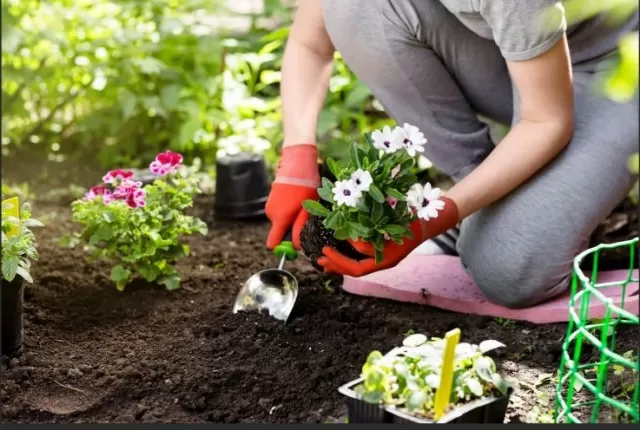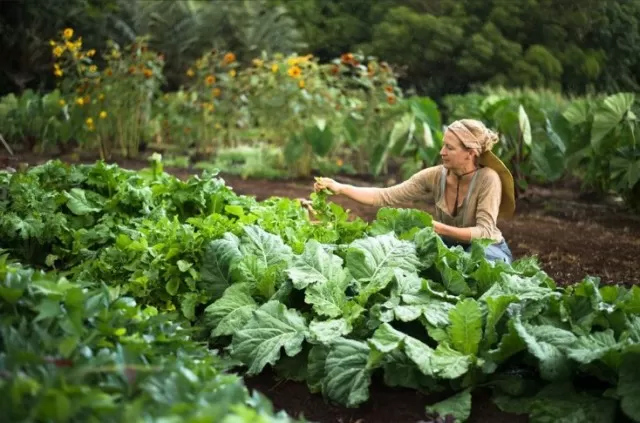Major Blunders in Vegetable Gardening. Embarking on the journey of any hobby, be it the art of gardening or another pursuit, inherently involves a dance with trial and error. Through these experiential missteps and triumphs, we unravel the intricacies that shape our newfound passions. However, within this mosaic of learning, there exist certain pitfalls so glaring that their avoidance proves paramount from the very beginning.
As we tread the fertile ground of gardening, the path of trial and error is our guide. It teaches us the nuances of soil, light, and care that each plant craves. Yet, intertwined within this growth process are those missteps of grand proportions—missteps that can thwart our budding green aspirations. It is these oversized stumbles that beckon us to approach with caution.
Before the first seed is sown, the first bulb planted, or the first sapling nurtured, we’re gifted the wisdom to sidestep the most grievous errors. These errors, if committed, can pave the way to disappointment and setbacks that mar the excitement of a nascent hobby. The realm of gardening offers us not only the satisfaction of growth but also the chance to cultivate resilience and finesse.
Prevent Costly Mistakes While Cultivating Your Edible Garden Oasis

Embarking on the journey of creating an edible garden is an exciting endeavor that promises both joy and satisfaction.
However, this venture can also present itself as a substantial commitment. Amidst the enthusiasm and anticipation, it’s important to recognize that missteps in the gardening process can range from minor hiccups to major setbacks that evolve over time.
By adopting a proactive approach to your gardening practices, you can not only rectify simple errors but also avert potential disasters, ensuring the flourishing growth of your verdant sanctuary of homegrown delights.
Maximizing Seed Utility: Averting Unnecessary Seed Waste
The unfortunate act of needlessly squandering seeds can be easily avoided through a simple adjustment in your gardening approach.
Rather than thoughtlessly emptying an entire packet of seeds onto your garden beds, consider the substantial waste that accompanies such actions. In the majority of instances, meticulously preserved vegetable seeds possess an impressive germination rate, rendering the wholesale sowing of seeds an unwarranted practice. .
An alternative strategy that can yield remarkable results lies within the framework of the Square Foot Gardening method.
This innovative technique not only promotes efficient space utilization but also offers valuable insights into optimal seed distribution. Embracing this approach, you’ll find that placing just 2 to 3 seeds per hole, in accordance with precise spacing guidelines, is more than sufficient for fostering robust growth.
By embracing this mindful seeding practice, you not only conserve seeds but also cultivate an environment where each individual plant can flourish to its fullest potential.
Selecting an Ideal Garden Location: A Prudent Step Towards Abundant Harvests

When embarking on the exciting journey of establishing a vegetable garden, one pivotal decision can significantly impact your gardening experience down the line.
Rushing through the process of selecting a planting spot may result in future headaches and diminished yields. Instead, allocate ample time to meticulously assess the potential sites for your new garden, for in this deliberation lies the key to a flourishing endeavor.
Prioritize a locale that basks in abundant sunlight, as this is fundamental to the prosperity of most vegetable varieties.
With a minimum requirement of six hours of daily sunlight, your garden’s location must be chosen wisely to ensure thriving crops. Beyond sunlight, consider the topography of the area; avoid locations prone to water accumulation, such as the base of inclines or beneath gutters, as excess moisture can undermine the health of your plants.
Equally important is accessibility.
While the allure of a distant, secluded corner might seem appealing, practicality reigns supreme. The joy of gardening can quickly wane if you’re faced with arduous treks to remote corners of your yard.
Opt for a location closer to your home, where tending to your plants becomes a convenient and pleasurable activity. This proximity not only encourages regular plant check-ins but also facilitates the timely harvest of your homegrown treasures.
In essence, the careful selection of your garden’s site is akin to laying the foundation for a successful and gratifying gardening journey.
With sunlight, drainage, and accessibility as your guiding principles, you set the stage for a verdant oasis that brings both beauty and bounty to your outdoor space.
Investing in Soil Excellence: Elevating Your Raised-Bed Gardening Success
In the exciting pursuit of kickstarting your raised-bed garden, the allure of budget-friendly 99-cent bags of soil might be hard to resist.
However, the foundation of your garden’s vitality lies within the quality of the soil you choose. The initial temptation to save on soil expenses can lead to years of toil, trying to rehabilitate soil health from a subpar starting point. To ensure a flourishing garden from the outset, it’s imperative not to compromise on soil quality.
Rather than succumb to the appeal of inexpensive yet lackluster soil options, consider the long-term implications of your choice.
A garden nurtured by nutrient-deficient soil is bound to yield lackluster results, stunting the growth and vibrancy of your plants. Opting for the good stuff right from the beginning is an investment in the future of your garden.
Allocate a little extra budget for premium, pre-made soil mixes that come enriched with a balanced array of nutrients.
Alternatively, you can take matters into your own hands by crafting a custom soil blend tailored to the unique needs of your garden. Mixing in organic matter, compost, and other soil enhancers can elevate the nutrient content and overall quality of your garden’s foundation.
By prioritizing soil excellence, you set the stage for a thriving and enduring garden ecosystem.
Your plants will thank you with robust growth, bountiful harvests, and a display of vitality that speaks to the nurturing care you’ve provided. Remember, a flourishing garden begins with the right soil – a cornerstone that deserves your attention and investment.
Balancing Nourishment: The Pitfalls of Excessive Fertilization

The allure of enhanced growth through liberal fertilizer application is a common misconception among those new to gardening.
The notion that an abundance of concentrated nutrients will lead to bumper crops of oversized vegetables, like jumbo tomatoes and colossal lettuce heads, is alluring but ultimately misguided. The truth is, the principle of “more is better” does not apply when it comes to fertilization.
Instead, excessive fertilizer usage can yield unfavorable consequences for both your garden and the environment it inhabits.
Resist the urge to drench your plants in concentrated fertilizer, as this approach doesn’t guarantee the desired outcomes.
In reality, over-fertilization can prove detrimental to your soil’s health, disrupting its delicate balance and hindering its natural processes. Moreover, the excess nutrients can leach into water systems, creating harmful runoff that poses a threat to the surrounding ecosystem.
It’s crucial to understand that not all fertilizers are created equal.
Formulas high in nitrogen, while promoting vigorous leafy growth, might inadvertently prioritize foliage over fruit production. A garden dominated by lush leaves but scant fruits is an outcome that runs counter to your aspirations.
Achieving harmonious nourishment calls for a balanced approach.
Rather than focusing solely on quantity, prioritize the quality and appropriate distribution of nutrients. Consult gardening resources or seek advice from experienced gardeners to determine the suitable fertilizer regimen for your specific plants.
By understanding the nuanced nutritional needs of your garden, you can foster a harmonious environment where plant health thrives, yields are abundant, and the ecological balance remains intact.
*The information is for reference only.